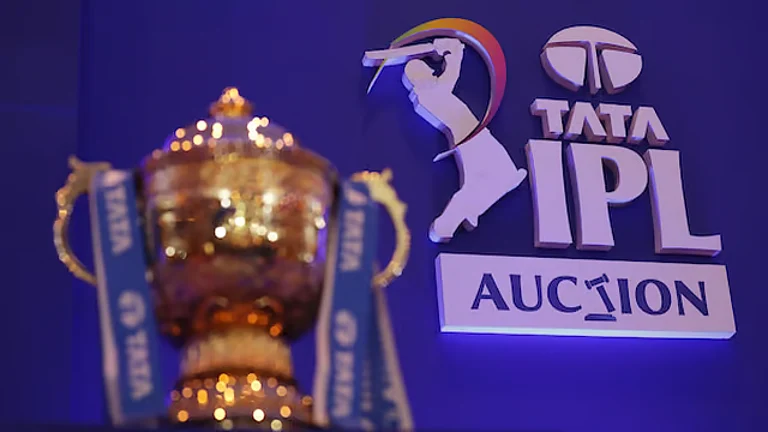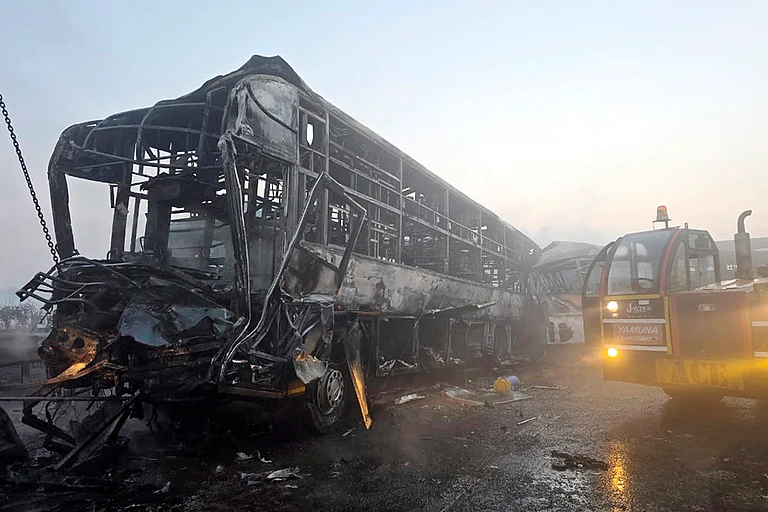They have turned busy neighbourhoods into a slice of rural Bengal—by a simple expedient of digging up busy Calcutta streets and planting banana trees—and their search for startling ‘themes’ has touched all things quotidian, from cricket bats to biscuits. But the Navin Palli Sharbajanin Durgotsav at Hati Bagan, in north Calcutta, has surpassed most in the breathtaking pursuit of a stupendous Durga Puja. The puja committee, which has been putting up pandals since 1924, has invited Pakistani truck painters—practitioners of a unique pop art form marked by brilliant colours and decorative patterns—to come and create its pandal. The expected lines about fraternal spirit issue forth from committee member Dipta Ghosh, but he puts his finger on it: “No puja in Bengal has ever had Pakistani artists take part in creating the artwork.” For, in truth, it’s partly the shock effect—of the fact itself and of the aesthetics—that creates a piquancy here. Domains and concepts that would normally clash are juxtaposed: Pakistanis and Shakti worship, trucks and the divine, Frontier aesthetics and Bengal. This is the furthest it has come: the restless, outbound quest for singularity in pandal artwork, which is only a few decades old, fuelled as it is by hefty corporate sponsorships in the age of TV publicity.

A typically decorated Pakistani truck
The idea of inviting Pakistani painters came via artist Gopal Poddar, who spotted an article on Pakistani truck painting on the internet. Unlike their drab Indian counterparts with their overused exhortations and tailgate doggerel, Pakistani trucks and buses are attractively decorated: new trucks are sent to painters who customise according to taste or region. Considered jingle art, the various parts of the truck or bus are fairly blanketed with motifs and colours. “It’s an expensive process,” explains Hyder Ali, chief of the three Pakistani painters, “but it is a matter of pride and good fortune, so everyone does it.” Indeed, Navin Palli is spending `30 lakh on the project. The puja—which Ghosh says is part corporate-sponsored, part donation-based—had to be planned in detail. “We had tied up with iccr and getting visas for our guests was no problem. Since September 3, they have been painting parts of the pandal.” The Pakistanis’ visas, due to expire earlier, was extended promptly when requested, so that they could stay back for Durga Puja.

Truck trio Mumtaz Ahmed, Hyder Ali and Mohammed Iqbal at Navin Palli, Calcutta. (Photograph by Sandipan Chatterjee)
Navin Palli’s pandal has been made to resemble a truck and uses actual truck parts, which was custom-made for the puja at Calcutta’s Panagarh, where trucks are assembled. Cranes were used to put the parts in place and the painters would work from 10 am till 9 pm, with some rest in between. After work they would be driven back to their hotel in south Calcutta. For the artists themselves, the entire experience, so far from home, was expectedly a unique one. “We are charmed by the people of this country,” says Mumtaz Ahmed, one of the artists. “We have received so much love and affection. I find the festivities delightful.” In keeping with the unique pandal, the Durga idol too was made of parts of a truck, using clutch plates for the Goddess’s jewelry and silencer pipes for legs. “No, we will not immerse the idol, since she is not made of clay.... We may donate it to a museum,” says Ghosh. So it may come to pass that, at the end of a season of tension at the LoC and half-hearted talks between the PMs, Navin Palli’s truck with a Pakistani pop form becomes the oddball exhibit of 2013.


























